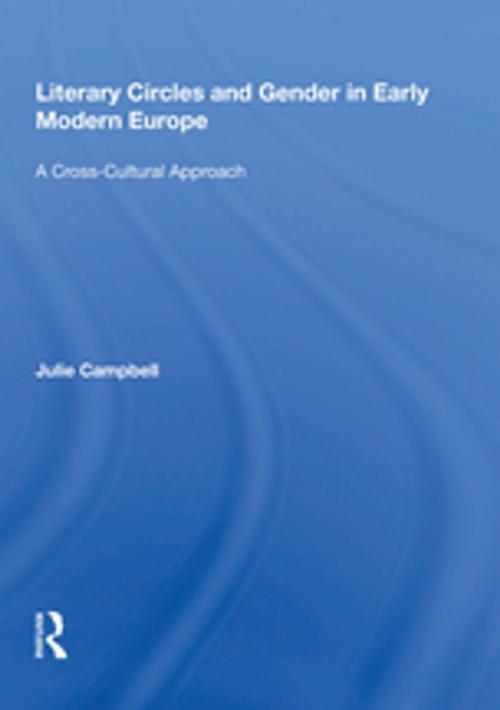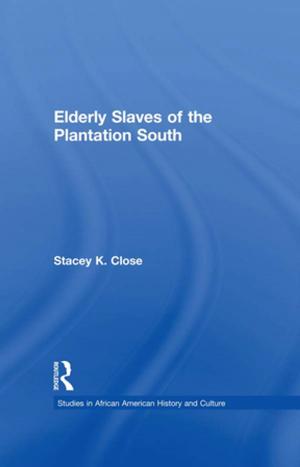Literary Circles and Gender in Early Modern Europe
A Cross-Cultural Approach
Fiction & Literature, Literary Theory & Criticism| Author: | Julie Campbell | ISBN: | 9781351153829 |
| Publisher: | Taylor and Francis | Publication: | January 18, 2018 |
| Imprint: | Routledge | Language: | English |
| Author: | Julie Campbell |
| ISBN: | 9781351153829 |
| Publisher: | Taylor and Francis |
| Publication: | January 18, 2018 |
| Imprint: | Routledge |
| Language: | English |
A comparative analysis, this study examines the interactions of early modern male and female writers within the context of literary circles. In particular, Campbell examines how the querelle des femmes as a discursive rhetorical tradition of praise and blame influenced perceptions of well-educated women who were part of literary circles in Italy, France, and England from approximately 1530 to 1650. To gain a better sense of how querelle language and issues were used for or against learned women writers, Campbell aligns selected works by female and male writers, pairing them to analyze how the woman writer responds, deflects, or rewrites the male writer's ideological script on women. She focuses first on the courtesan Tullia d'Aragona's response in her Dialogo della infinità di amore to Sperone Speroni's Dialogo di amore, and contrasts the actress/writer Isabella Andreini's pastoral La Mirtilla with Torquato Tasso's Aminta. She then discusses the influence of Italian actresses upon the manners and mores of French women of the Valois court, especially focusing on performative aspects of French women's participation in court and salon rituals. To that end, she examines the influential salon of the aristocratic, learned Claude-Catherine de Clermont, duchesse de Retz, who encouraged the writing of positive querelle rhetoric in the form of Petrarchan, Neoplatonic encomiastic poetry to buttress her reputation and that of her female friends. Next, Campbell reads Louise Lab� D�t de Folie et d'Amour against Pontus de Tyard's Solitaire premier to illustrate the tensions between a traditional and nontraditional querelle stance. She then discusses Continental influence upon English writers in the context of the Sidney circle in England. Moving to the closet dramas of the Sidney circle, Campbell examines the solidarity these writers demonstrated with nontraditional stances on querelle issues, and, finally, she explores how three generations of English literary circles con
A comparative analysis, this study examines the interactions of early modern male and female writers within the context of literary circles. In particular, Campbell examines how the querelle des femmes as a discursive rhetorical tradition of praise and blame influenced perceptions of well-educated women who were part of literary circles in Italy, France, and England from approximately 1530 to 1650. To gain a better sense of how querelle language and issues were used for or against learned women writers, Campbell aligns selected works by female and male writers, pairing them to analyze how the woman writer responds, deflects, or rewrites the male writer's ideological script on women. She focuses first on the courtesan Tullia d'Aragona's response in her Dialogo della infinità di amore to Sperone Speroni's Dialogo di amore, and contrasts the actress/writer Isabella Andreini's pastoral La Mirtilla with Torquato Tasso's Aminta. She then discusses the influence of Italian actresses upon the manners and mores of French women of the Valois court, especially focusing on performative aspects of French women's participation in court and salon rituals. To that end, she examines the influential salon of the aristocratic, learned Claude-Catherine de Clermont, duchesse de Retz, who encouraged the writing of positive querelle rhetoric in the form of Petrarchan, Neoplatonic encomiastic poetry to buttress her reputation and that of her female friends. Next, Campbell reads Louise Lab� D�t de Folie et d'Amour against Pontus de Tyard's Solitaire premier to illustrate the tensions between a traditional and nontraditional querelle stance. She then discusses Continental influence upon English writers in the context of the Sidney circle in England. Moving to the closet dramas of the Sidney circle, Campbell examines the solidarity these writers demonstrated with nontraditional stances on querelle issues, and, finally, she explores how three generations of English literary circles con















